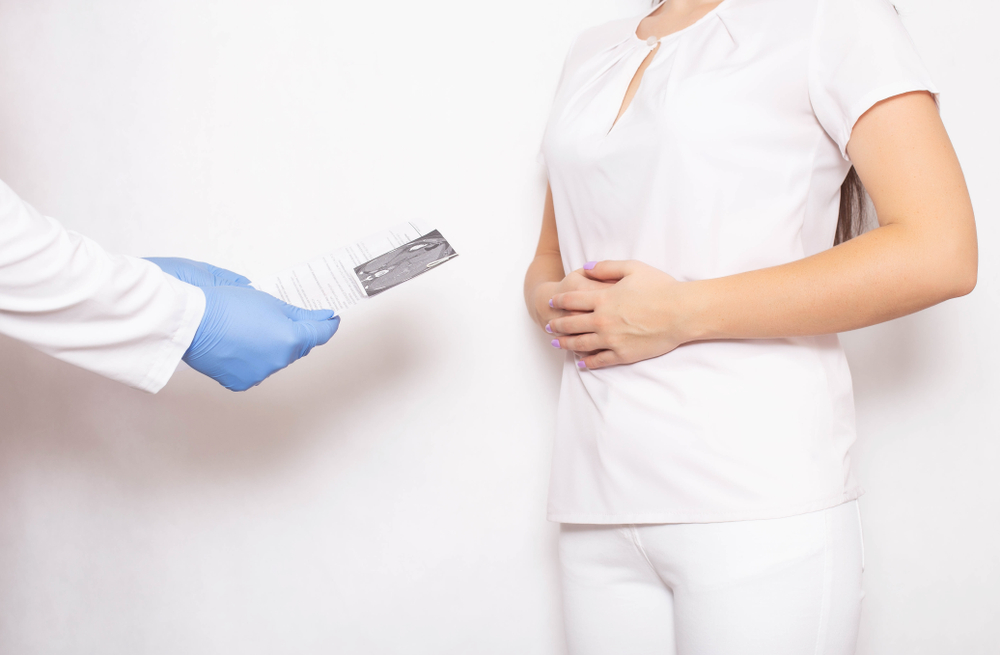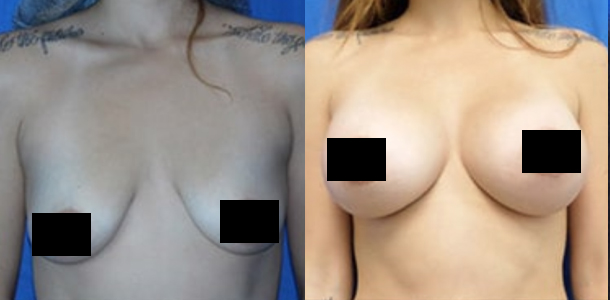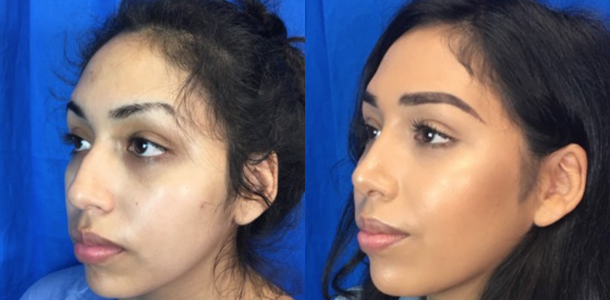Esophagogastroduodenoscopy (EGD)
Consultations offered at our four convenient locations in Pomona, Beverly Hills, Rancho Cucamonga and Apple Valley, CA

Esophagogastroduodenoscopy (EGD), also known as an upper endoscopy, is a highly beneficial examination that screens the upper digestive system for abnormalities. It is used to diagnose and sometimes treat conditions that affect the esophagus, stomach, and beginning of the small intestine (duodenum). [1]
A thin, flexible tube called an endoscope equipped with a small camera and light source relays images back to a monitor to investigate causes of persistent abdominal pain, nausea, vomiting, difficulty swallowing, or heartburn. For over 33 years, Dr. Lee Au has been serving the Southern California area with high patient satisfaction, an impeccable safety record, and great results. If you’ve been struggling with digestive discomfort, take an informative step for your health and schedule a consultation with Pacific Med Health Group in Los Angeles and San Bernardino counties. You can also reach us at (800) 555-5551.
Contents
About
An esophagogastroduodenoscopy (or upper endoscopy) is nothing to fear (even though the name does contain 26 letters). This procedure is an effective way to examine the digestive system. Other diagnostic imaging services, like X-rays, are unable to provide an accurate portrayal of bleeding or inflammation. An EGD is a gentle procedure in which Dr. Au inserts a small tube into the mouth and advances it through the esophagus, stomach, and beginning of the small intestine (duodenum). At the end of the tube is a small camera that transmits images of your digestive system. The procedure is meant to do three things: [2]
Investigate
Upper endoscopy helps Dr. Au determine the cause of digestive symptoms such as nausea, vomiting, abdominal pain, difficulty swallowing, and gastrointestinal bleeding.
Diagnose
An EGD is used to accurately show the interior of the organs in the digestive system. A separate biopsy may be performed to screen for diseases or identify other underlying conditions like gastritis, peptic ulcers, hiatal hernia, or cancers of the digestive system.
Treat
The procedure can treat a few gastrointestinal conditions at the same time as your EGD. Dr. Au can perform small surgical adjustments by passing tools through a port in the endoscope to repair a bleeding vessel, widen a narrow esophagus, or remove a polyp or debris.
Reasons for an EGD Exam
An upper endoscopy exam can identify abnormalities in the digestive system and is a preventative measure that can be used to detect serious health problems as early as possible. If your life has been disrupted by recurring gastric pain, then an EGD is the best way to determine exactly what is going on. Other reasons for conducting an upper endoscopy include:
- Provides an accurate visual of abnormalities such as inflammation and bleeding
- Can detect polyps and tumors at an early stage
- Certain GI conditions can be treated during the exam
Patients looking for relief from symptoms in the digestive tract are strongly encouraged to schedule a consultation with Dr. Au. Who Should Get an EGD?
Patients experiencing the following problems and symptoms may require an upper endoscopy.
- Difficulty swallowing
- Heartburn
- Upper abdominal or chest pain not related to heart issues
- Unexplained weight loss
- Persistent nausea and vomiting
- Blood in the GI tract
- Indigestion
Take a proactive step in getting the help you need. An EGD will allow Dr. Au to identify your symptoms and suggest proactive treatment solutions to restore your well-being. Schedule your consultation today.
Personal Consultation
Pacific Med Group’s main goal is to treat patients with compassion, care, and support. We are here to serve you and find real solutions for your symptoms. Patients can seek treatment at any one of our conveniently located offices in Los Angeles and San Bernardino counties. We have state-of-the-art offices in Beverly Hills, Pomona, and Apple Valley.
Your private consultation with Dr. Au will be an informative chat about your condition. He’ll better understand your physical health by reviewing your medical history, previous surgeries, and prescriptions. This will also be your opportunity to discuss the symptoms that you’ve been experiencing. If these symptoms are recurring and causing you significant discomfort, then you may be deemed a candidate for an esophagogastroduodenoscopy.
It should be noted that some patients may need to first get a referral from their Primary Care Provider (PCP). Our office will gladly assist in coordinating the paperwork for you. Schedule your consultation with Dr. Au by using our easy online form or calling (800) 555-5551.
Things to Do Before EGD
Dr. Au provides patients with detailed instructions to ensure a smooth experience. Please follow them carefully.
- You may have dietary restrictions for the week leading up to your procedure
- Don’t consume food or liquids six hours before the procedure
- Take the day off from work and designate a friend or other responsible adult to drive you home
- Let our office know about your current medications, allergies, or special needs
How Your Upper Endoscopy Will Proceed
Patients will be given an IV drip of sedatives to ensure that they are relaxed and comfortable during the procedure. Additionally, a local anesthetic will be sprayed into the mouth to prevent discomfort when the scope is inserted. Monitoring devices are used to track blood pressure, heart rate, and blood oxygen.
Dr. Au begins the process by gently inserting the small tube into the mouth. It will make its way through the esophagus, stomach, and small intestine. Special controls allow the tube to move effortlessly through the body. The tube can move in many directions, blow air, or suction out bodily fluids. The tube also contains a small channel to pass special instruments for diagnosis or treatment. [3] Each organ will be examined thoroughly. During the scope’s journey through your digestive system, Dr. Au will be carefully noting the color, texture, and other details of the lining of your internal organs. The EGD relays high-definition video footage that is viewed on a monitor. Slight, painless pressure may be felt when the tube reaches the stomach. Small tissue or polyps may be removed for further examination.
Your EGD concludes with the tube being carefully removed from your body. Depending on your symptoms, the procedure can take 15-30 minutes to complete.
Recovery
Make sure to take it easy when you get home. You may have a sore throat. If so, gargle with salt water to relieve discomfort. Symptoms of soreness, cramps, and grogginess may be felt for several hours after your procedure but should resolve by the next day, which is also when you can resume normal activities. You’ll be able to eat and drink following your procedure unless Dr. Au tells you otherwise. Start by eating and drinking carefully and opt for cool liquids and soft food. You may find it more comfortable to slowly advance to regular food after a few days.
Results
Dr. Au will discuss your results with you after your procedure. Since you may still be under the effects of medication, you’ll also be given a comprehensive printout that will further explain the results and findings. Tissue biopsies usually take 72-96 hours to complete. [4] Your test can reveal either two things:
- Normal test result: This means the inner linings of your digestive system are smooth and shows no signs of inflammation, growths, ulcers, or bleeding.
- Abnormal results: Visual concerns in the GI tract such as damage to the intestinal lining, growth of esophageal rings, hiatal hernia, esophageal varices, or inflammatory conditions of the lining of the esophagus.
Should your test results display areas of concern, Dr. Au and his caring staff are ready to intervene and recommend medication, lifestyle changes, and/or other treatments.
Cost
The cost of an esophagogastroduodenoscopy is covered by most insurance policies, including medicare. However, you may be responsible for some costs. Pacific Med Health Group is pleased to work with many major HMO and PPO networks. Leave the work to us with our helpful insurance verification form. Simply follow the instructions on the form and we’ll be in touch to discuss your insurance information and costs.
FAQ
Will an EGD hurt?
Patients getting an EGD may feel slight discomfort throughout the process. You will be made to lie on your left side. An anesthetic will be sprayed into the mouth to numb the area. A mixture of IV sedatives will be administered in the hand or arm to ensure your comfort.
How long does it take to recover from an EGD?
After you’re released from our care you will need to take a day off from work. Feelings of bloating and nausea may be felt. These symptoms should dissipate within 24 hours.
References
- Gastroenterology. (n.d.). Www.hopkinsmedicine.org. Retrieved September 1, 2021, from http://www.hopkinsmedicine.org/healthlibrary/test_procedures/gastroenterology/esophagogastroduodenoscopy_92
- Upper GI Endoscopy. (n.d.). American Gastroenterological Association. Retrieved September 1, 2021, from https://gastro.org/practice-guidance/gi-patient-center/topic/upper-gi-endoscopy/
- Upper GI Endoscopy | NIDDK. (n.d.). National Institute of Diabetes and Digestive and Kidney Diseases. Retrieved September 1, 2021, from https://www.niddk.nih.gov/health-information/diagnostic-tests/upper-gi-endoscopy
- What Is an EGD? (n.d.). Verywell Health. Retrieved September 1, 2021, from https://www.verywellhealth.com/upper-endoscopy-p2-1741797#:~:text=Understanding%20upper%20endoscopy



